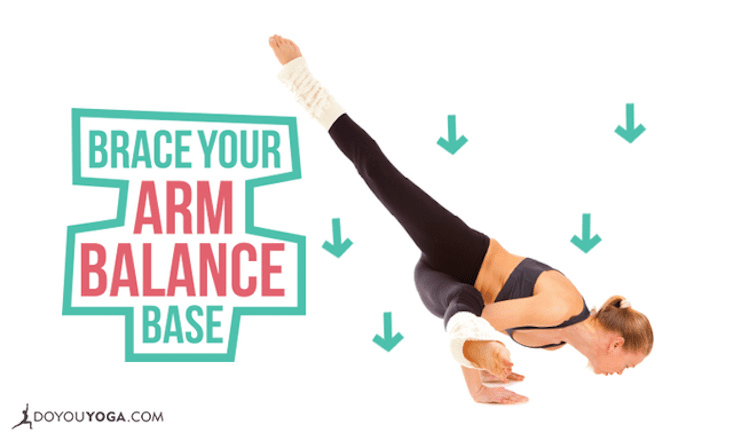Arm balances require a lot from us. They require a mix of strength, patience, and courage to put all our weight and faith on our hands and lift up.
Arm balances strengthen the arms, shoulders, wrists, and the core. They can give us a playful feeling and a boost of confidence when we observe our own progress. At the same time, these very benefitting areas do need some attention before we can progress further.
With so many nice benefits, it's definitely worth it to try these fun poses. However, they do require a steady practice and some preparations before we can rise and shine. Here are some tips you can take into account before you start your own journey.
1. Take Care of the Wrists
When we start with arm balances, the wrists have to endure a lot of pressure. The wrists have many small bones and joints, which are quite vulnerable, especially if we start placing a lot of weight on them without properly preparing them for it.
Wrist pain tends to be one of the most common injuries amongst yogis, and depending on the level of injury, they take a l-o-n-g time to heal (think years). So let's not go there, no arm balance is worth that.
Practice by stretching the wrists, and gradually placing more weight on them. Start with Downward Dog, Chaturanga, Plank Pose, and plenty of wrists rolls and stretches.
2. Awareness of the Shoulders and Shoulder Blades
The shoulder joint is the most mobile joint in the body, and as such, it's also the most vulnerable. There are a group of muscles holding the shoulder in its socket, and it's these muscles that we need to be aware of when we are building arm balances.
If there are any imbalances in these muscles, the shoulder can easily get misaligned in poses that bear weight on the hands, and when done repetitively, can lead to injury. Strengthen your shoulders for example by practicing the Plank position, drawing your shoulders back and down, and slowly transitioning into Chaturanga.
3. Strengthen the Arms
When we start with arm balances, we also need to be able to have strength in the arms to lift and carry ourselves. Every yoga pose comes with preparatory poses, or milder versions we can start with.
If you cannot perform the preparatory version with ease and steadiness, it's not wise to move onto the more advanced versions. For example, before moving up towards Supported Headstand, you should be able to stay comfortably in the Dolphin Pose for 5 to 10 breaths. Poses such as Plank and Dolphin Plank build your upper body strength while getting you ready for more.
4. Establish Core Power
Having a stable core helps with all poses, and the arm balances are no exception. There is a lot of stability coming from the core, and if the core is weak, the rest of the body might have to compensate leading to misalignment and improper weight distribution. You can practice the core with poses such as Navasana (Boat Pose), Ardha Navasana (Half Boat Pose), Plank, and Side Plank.
Try These Arm Balances to Begin
Some of the easier arm balances to start with are Tolasana (Scale Pose) and Bakasana (Crow Pose).
1. Scale Pose (Tolasana)
To come to Tolasana, start by coming into a Lotus Pose. Place your hands on the floor or on two blocks. Press your palms on the ground and feel where the weight is. As you lift yourself up, try to bring the weight more towards the knuckles, away from the wrist. Stay as long as you can, come down to rest, and repeat.
This pose is great for allowing you to get used to having weight on your hands without going upside down yet.
2. Crow Pose (Bakasana)
To come into the Crow, start in a squat and bring the palms on the floor. You can have your toes on a block to elevate your feet, this will help you to get into the pose. Round your back and engage the muscles in your back. Rise onto your toes, place your knees on the backs of your upper arms, and take your gaze forward. Don't look directly down, this will make the balance harder.
Lift one leg up at a time to get the feel of the pose, and then just try leaning forward onto your hands and lifting both legs up. You can place a pillow in front if you are afraid of landing on your face.
Yoga is a great teacher of patience and trust into the process. When it comes to arm balances, take it slow and don't attempt them before your body is ready. Have fun, enjoy like a child and don't take yourself too seriously. We only learn stability and grace by wobbling and falling down!


